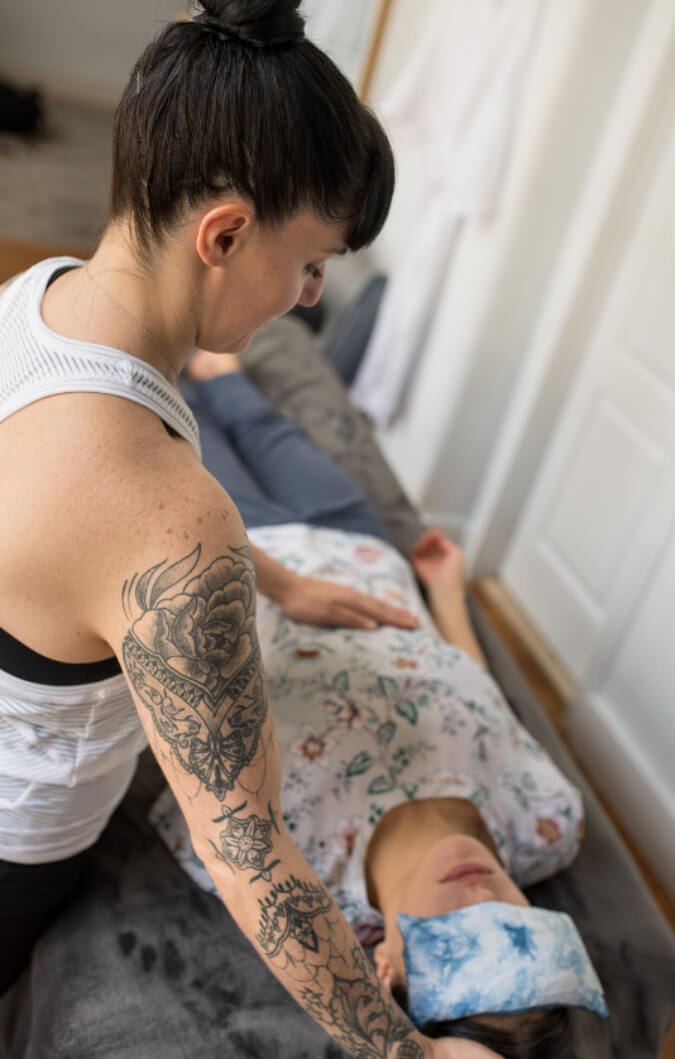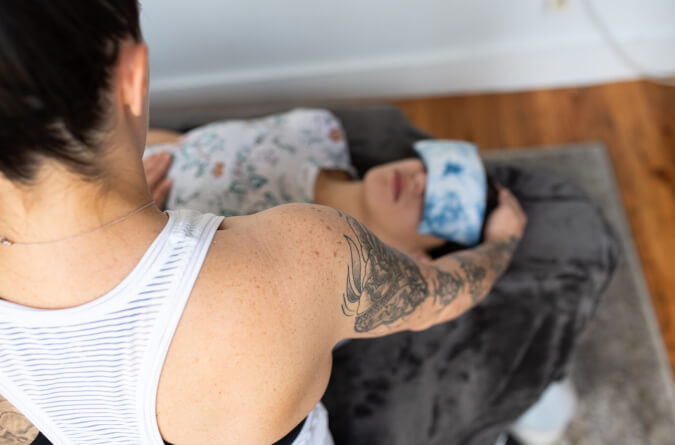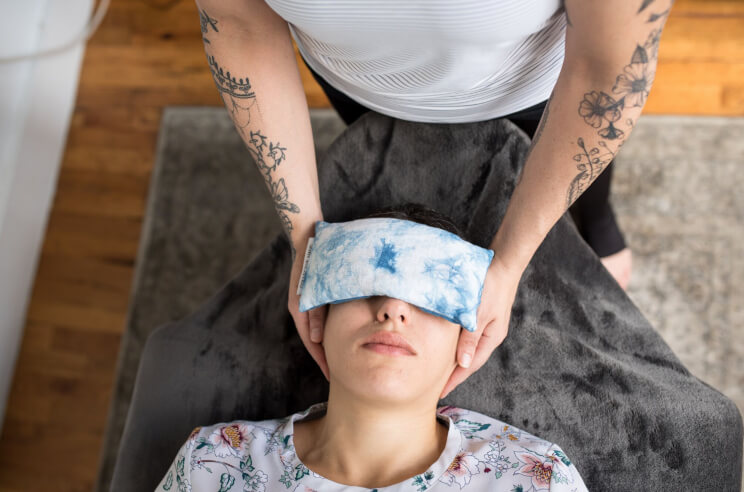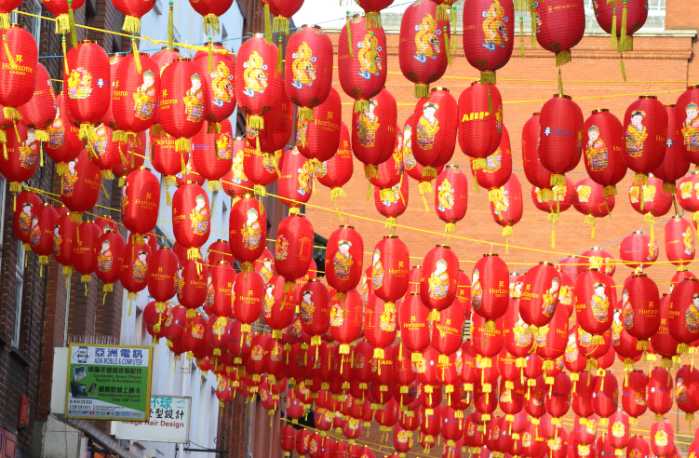I walked into my first Reiki session not knowing much. While I’ve always been a proponent of alternative therapies, like yoga and acupuncture, the practice of Reiki just seemed a little too out there for me. Paying for someone to merely hover their hands over my body? A deep tissue massage always seemed the better choice.
But at the start of the new decade, I made a promise to myself to routinely break out of my comfort zone, and that included trying things that puzzled me, like Reiki.
I signed up for a session with Colleen Hoplamazian at Half Moon Ayurveda to see what it was all about.
“Reiki is a healing session where I, as a practitioner, lay my hands on you or hover over you, channeling energy from a universal source that helps to heal you,” Hoplamzian explained. “It’s a healing support in a very gentle way. It can be very powerful.”
She instructed me to simply lie down on the massage table and relax. Unlike a massage, I was able to keep my clothes on, which could be convenient if you’re on a lunch break from work.

“Most people fall asleep,” she noted, covering my eyes with an eye pillow filled with fresh lavender and topped with quartz. “I put it there as a clearing mechanism, so it’s not holding onto excess energy from a previous session.”
Patients have the option of having their practitioner hover or touch, and I elected the latter. Utilizing different hand positions on my feet, stomach, legs, arms and head, the gentle touch packed a powerful punch — and that’s saying a lot for someone who loves deep tissue massages as much as I do.
At the beginning of the 30-minute session, I was pretty uncomfortable because it was powerful in a way I wasn’t accustomed to. By the end of the session, however, I was completely relaxed, calm and clear. The constant whirl of things to do and people to see quieted down and I was fully present, the way you would feel after a good, meditative yoga class. The only difference was, I didn’t have to do a thing.
Hoplamazian ended the Reiki session by pointing out blockages she noticed, both physically and energetically. Despite me not giving her any background, she was spot on in recognizing my problem areas, which fascinated me.
So what are the health benefits of Reiki, exactly?

“It depends on what you’re working on,” she explained. “Whatever you’re looking to heal, it will support that healing. So if you need an emotional boost it will give you that. If you’re looking to relieve you knee pain or lower back pain, it will help support that. It’s something that helps draw in energy where it’s needed and draws out energy where it’s stuck. It’s a good booster to keep all the systems flowing in a healthy way.”
Hoplamazian even added that Reiki is now being used as a complementary therapy in hospitals around the world.
“A lot of [who] have experienced Reiki will call in a Reiki practitioner if they’re going into surgery or if they need extra healing while they’re in the hospital for a few days.”
A study by the IARP (International Association of Reiki Professionals) confirms this, finding that 60% of the top 25 U.S. hospitals (as ranked by U.S. News & World report in 2002), offered Reiki programs either formally or informally.
So should you give Reiki a try? That choice is up to you. Experience it for yourself at Half Moon Ayurveda (1520 Sansom St., halfmoonayurveda.com) where you can sign up for either a 30-minute session or 60-minute session.


























